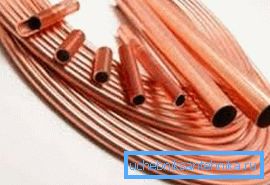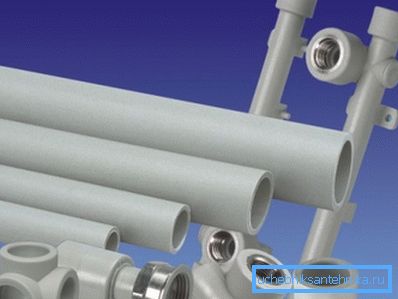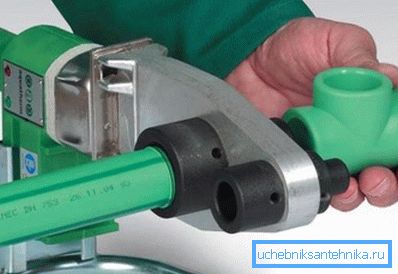Replacing pipes in an apartment: practical tips and
About how much it costs to change the pipes in the apartment, sooner or later, you think about it, starting to carry out major repairs. Full replacement of the pipeline in a residential area can be caused by a number of reasons, including the unsatisfactory appearance of old communications, the presence of hidden or external leaks, or a weak pressure on the flow of cold water.
In this article, we will talk about whether it is possible to cope with the replacement of communications independently, and in addition, we will consider what materials and tools may be needed to carry out such work.

Plumbing services or self-scheduled work

When planning work with plumbing, we ask ourselves what kind of master to invite? On the other hand, is it necessary to invite someone if everything can be done independently?
In order to make the right decision about this, look at the cost of replacing pipes in an apartment, listed on the websites of specialized organizations. As a rule, the average price of services starts from 15-20 thousand rubles, and note that this is only payment for work without the cost of materials!
Moreover, the cost to change the pipes in the apartment by many plumbers is calculated not fixed, but based on the number of points (connections of leads and drains). Do you think in this case it will turn out to pay less? No, the cost will still be high.
Important: When deciding to call a plumber or to work independently, you need to take into account the fact that most modern pipes, fittings and related accessories are made with the expectation of maximum simplification of installation. In other words, with simple tools and properly selected components for the construction of the pipeline, you will surely cope with the replacement of household communications in the bathroom and in the kitchen.
Choosing pipes and related accessories
The result of the planned work depends largely on the materials that you decide to use.
Consider the types of materials that can be purchased on the market today and tell about their advantages and disadvantages.
- Steel tubes - The traditional solution for the installation of water and heating systems.

Such materials and their fittings are commercially available. But if we talk about the use of steel pipes for independent plumbing, the disadvantages are much more than the advantages.
First of all, it should be noted the need for a specialized tool, the price of which is high. Steel is complex in machining, and therefore it is possible to start work with a special pipe bender, dies for cutting external thread, angle grinder (angle grinder) with discs for metal, etc.
Important: In addition to the tool, working with steel pipes requires sufficient professionalism.
.

- Copper pipes the installation is much simpler than steel counterparts, since it is possible to abandon the threaded connection and perform soldering using a special solder. But in this case one cannot do without a professional pipe bender for bending pipes, and the price of copper pipelines is high.
- Metalloplast - It is a combination of plastic and metal.

Such pipes are easy to machine, for example, to bend them without crushing the walls of a rather special spring.
In addition, this material is perfectly cut with both special scissors and a hacksaw. And, most importantly, the connection of pipes and fittings collet threaded or crimp.
Both options are simple to implement and can be made by hand. The disadvantage of metal structures is their short operational life. Moreover, the main part of metal fittings on sale is characterized by low quality and a tendency to oxidation.
- Polymer pipes - This is a wide range of products made from polypropylene (PP), polyethylene (PE) and polyvinyl chloride (PVC).

Polypropylene pipes and similar fittings, which can be soldered into a reliable, durable and relatively inexpensive construction, are most common in the construction of household systems. Such pipelines have been serving for at least 50 years without the need for regular maintenance and repairs.
From the above, we can draw the following conclusion. For the budget replacement of old pipes for new ones, it is advisable to use metal-plastic or polypropylene.
Important: No matter what pipes you will use when replacing, their internal diameter must be not less than the internal diameter of the dismantled communications.
Let us consider the replacement technology in more detail.
Dismantling of old communications
The instruction of replacing the plumbing system in the apartment provides for the preliminary dismantling of old communications.
First you need to decide on where to start the replacement from the riser or from the counter. If the meter is installed on the old pipes after the riser, it is advisable to contact the house management or the water supplier before dismantling. You will need to write an application for reinstalling the water meter.
If repairs will be carried out without redevelopment of the premises, the replacement of the pipeline should be carried out consistently. Thus, starting from the faucet, a section of pipes is dismantled to the nearest connection, then to the next connection and so on to the riser.
The advantage of consistent replacement is that, due to inexperience, you cannot go wrong with the size of the pipeline, and the installed system will fit into the familiar interior of the room.
Now we will determine the features of the installation of pipes and fittings made with the use of metal-plastic and polypropylene.
Installation of metal-plastic

The installation instruction for metal-based laminate using push-in fittings is as follows:
- Choose a pipe of a suitable diameter and cut it off with one edge with special scissors that allow you to cut at an angle of 90 °.
- Calibrate the cut end of the pipe using a calibrator and chamfer so that the fitting enters the hole easier and denser.
- We put a nut on the pipe, and then a fitting collet.
- We check the presence of sealing rings on the shank of the fitting and insert the shank into the hole of the pipe until it stops.
- Next, we apply the fitting to another connecting element on the pipeline, we put the nut and tighten it to the stop.
Polypropylene installation

To work with polypropylene will require special plastic fittings for pipes and a handheld soldering iron with replaceable sleeves.
Installation instructions for the following:
- The pipe is cut with special scissors at an angle of 90 °.
- Heat the soldering iron.
- We insert the pipe and fitting into the heating sleeves and count up to 15.
- We take out the heated elements and connect.
- After the plastic has cooled, the compound is ready for use.
Conclusion
In this article, we looked at what materials and tools should be used to replace plumbing systems. In addition, we talked about the most common methods of connecting pipes into a single plumbing system.
By applying this information in practice, you can not only get a new pipeline, but also save money on calling a professional plumber. More useful information can be found by watching the video in this article.